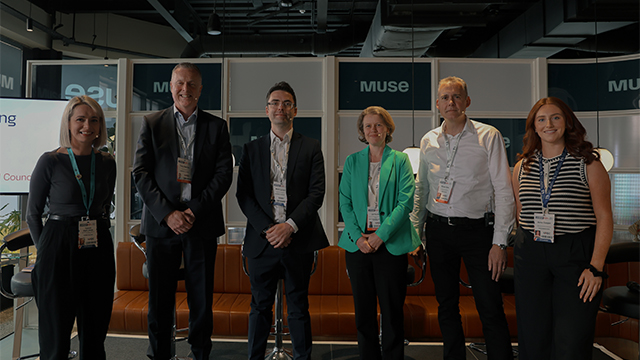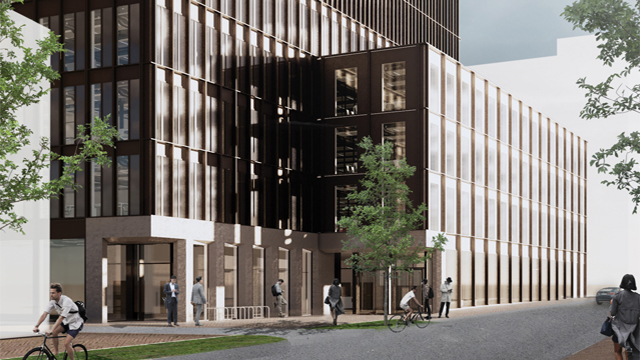We hear a lot about the digital transformation of commercial real estate and how it allows people to do things bigger and better. But what does that actually look like? Well, if you are looking for a working example, then you could do a lot worse than the Voice of the Region podcast.
The podcast is a conversation with some of the most active agents in the regions – as ranked through the EG Radius On-Demand Rankings, a constantly up-to-date display of how much space has been let and how many deals have been closed in a particular market.
And what stories do those agents have to tell? What is interesting is how much they have in common no matter where in the UK they are. In short, the logistics market has been red-hot since the start of the pandemic, the office market is slowly returning to health after a very difficult 2020, and retail – well, retail is complex. And land, no matter where you are, is in scare supply.
But what else did we learn? Here Voice of the Region podcast host Jim Larkin shares 10 lessons from his audio journey around the UK this year.
1. If possible, have a really good university in your region
Both Oxfordshire and Cambridgeshire have thriving technology sectors because of the businesses being spun out of their universities. Richard Venables at VSL & Partners explained how Oxfordshire’s technology sector had attracted more than £1.2bn in external funding since the start of the pandemic and that around 20 companies a year are being spun out in sectors ranging from life sciences to vaccine research, all with specific property requirements.
In Cambridgeshire, meanwhile, office rents are about to smash the £50 psf mark – making it the envy of any region outside of London – according to Bidwells’ senior surveyor George Craig. Some occupiers are blossoming thanks to changing consumer habits accelerated through life in lockdown, such as streaming services provider Roku, which not only offers must-watch television series but also the Peloton cycling app.
Away from Oxbridge, we heard from Naylors Gavin Black’s Keith Stewart who explained how the North East is transitioning into a world-class hub for green technology, thanks in part to collaboration with Newcastle University. In South Wales, 20% of the population of Cardiff is made up of students and this is helping the city’s pandemic-hit high street reposition itself as more of a leisure destination, according to Fletcher Morgan’s Matthew Jones.
2. Failing that, have one nearby
Norfolk is well-connected with Cambridge, and Arnolds Keys’ Guy Gowing believes the county can become the eastern end of the Oxford-Cambridge Arc. It is one of the few counties with an abundance of space, making it the pragmatic choice for occupiers looking to supply products and services into Cambridgeshire’s technology sector at significantly lower rents.
3. Motorways offer vital roadside assistance
The logistics sector is going great guns across the Midlands, and this is due to geography and its motorway connectivity with the rest of the country. Bromwich Hardy’s James Brooks explained how the road network in Warwickshire was vital to its booming industrial sector, while John Truslove’s Ben Truslove told us how most development in Worcestershire tends to happen within a few miles of either the M5 or M40
Connectivity is also the name of the game in Berkshire, with four major motorways within easy reach and London on its doorstep. Page Hardy Harris’s Nick Hardy explained how this had led to its logistics market going wild, and a digital technologies sector in the Thames Valley going from strength to strength.
4. The importance of ports
Hampshire is home to both Southampton and Portsmouth, with both offering a maritime gateway to the wider world, and this is a massive help to the logistics and shipping services sectors across the county according to Hellier Langston’s Andy Hellier.
Suffolk, meanwhile, is home to the UK’s biggest container port in the shape of Felixstowe and this is a huge driver of activity for the county. Penn Commercial’s Vanessa Penn explained how companies specialising in PPE or food deliveries were taking space there in response to the pandemic, and she expects the creation of a freeport at Felixstowe and Harwich to be a massive boost for the CRE sector.
5. The army needs commercial occupiers, too
In Dorset, which had been all over the news as the destination of choice for absurdly large numbers of locked-down sun worshipers, Sibbett Gregory’s Alastair Knott told us about the county’s surprisingly high-tech military presence which was attracting industrial occupiers looking to work with the Ministry of Defence. It is also a county with a flourishing digital and creative services sector, with employees pulled in by the quality of lifestyle on offer.
In Wiltshire, meanwhile, Myddelton & Major’s Dean Speer explained how the army’s presence in and around Salisbury Plain helped not only attract commercial occupiers specialising in military technology, but also in bringing in thousands of extra residents to the county with resultant benefits to the CRE market.
6. Independence is the state of mind for retail
It has not been a golden couple of years for retail generally, but in Sussex we may find an example of what successful town centres of the future will look like according to Flude Property Consultants’ Andrew Halfacree and Will Thomas. They argue Brighton, with its firm focus on quirky independent retailers, has proved incredibly resilient during the pandemic and that cities will need to offer a genuine point of difference if they expect shoppers to visit.
7. Offices will be fine
For a host of reasons, 2021 was the year office occupiers realised that working from home is not a viable long-term solution, according to Frost Meadowcroft’s Shaun Wolfe. He says the market in West London began to recover this year after a very tough 2020, although offices are having to offer more to remain competitive in the era of hybrid working.
8. Tenants are seeking really short-term leases
Logistics space in the West Midlands is letting at twice the five-year average but uncertainty created through Brexit, Covid and a global shipping crisis are seeing some units being taken for as little as three months, says Darby Keye’s Chris Keye. He says demand for logistics space is so strong that landlords are usually able to hold out for longer terms, but the days of 10 years being a standard lease length are long gone.
9. Be competitive on price
The industrial market in Kent has enjoyed its strongest ever year according to Caxtons Commercial’s Mark Coxon, and this is helped by M25 industrial rents being half the level of prime sites to the north and west of London despite journey times to the city centre being the same. It helped the county let 3.5m sq ft of industrial space this year, compared with just 850,000 sq ft in 2020.
10. Regional agents are really good company
Every single person we spoke to this year talked about their region with passion, warmth and intelligence, which turned some really niche subjects into very entertaining listens. We cannot wait to hit the road and talk to more of you next year.











